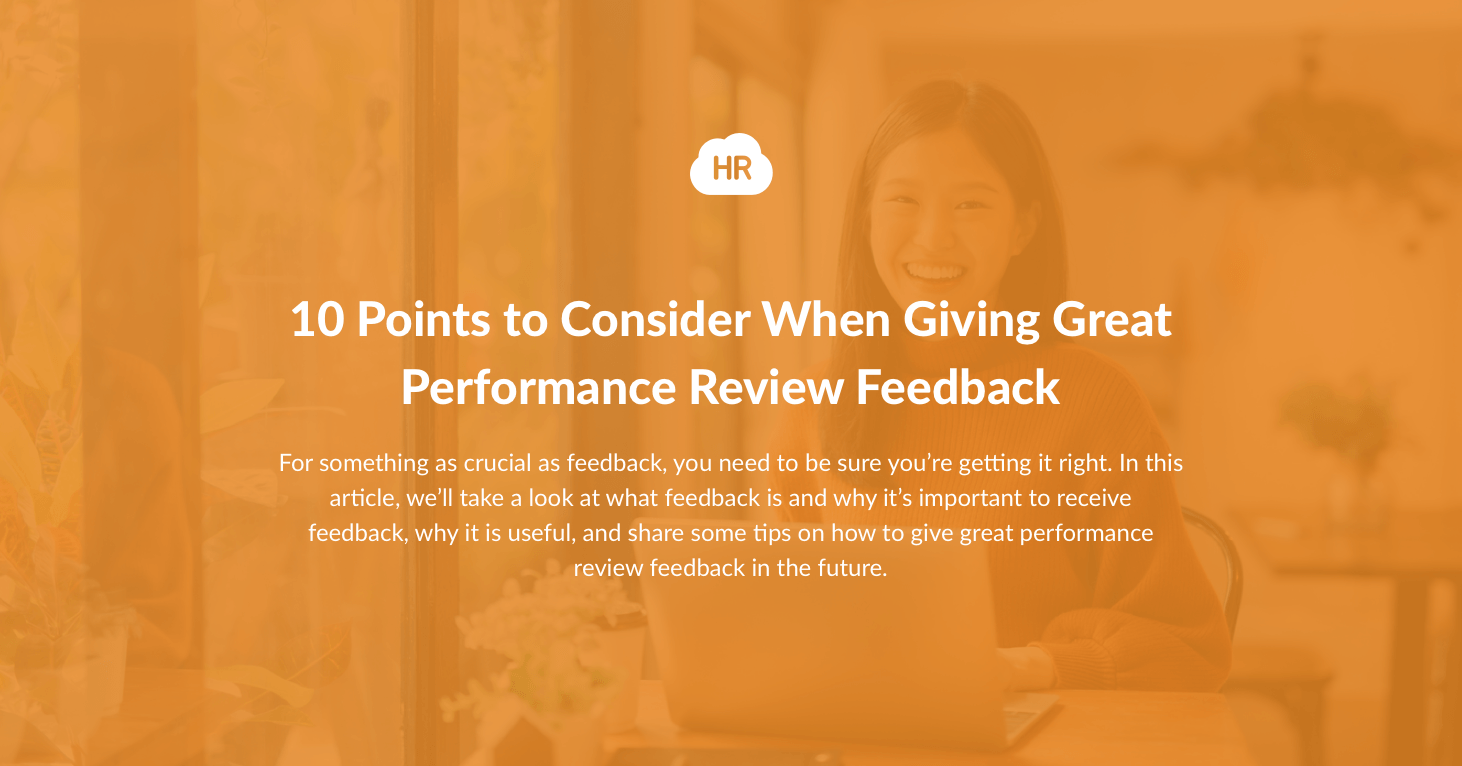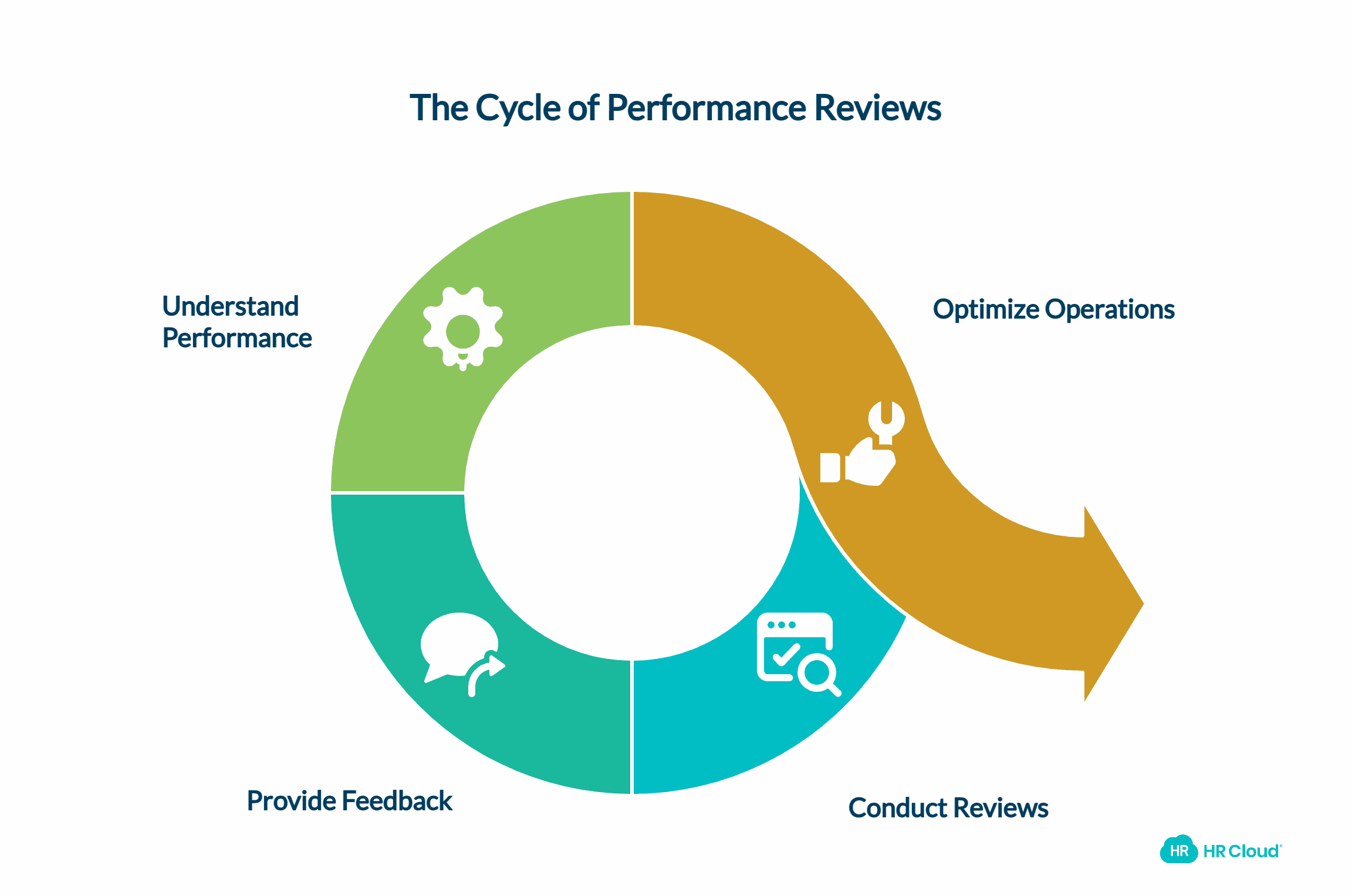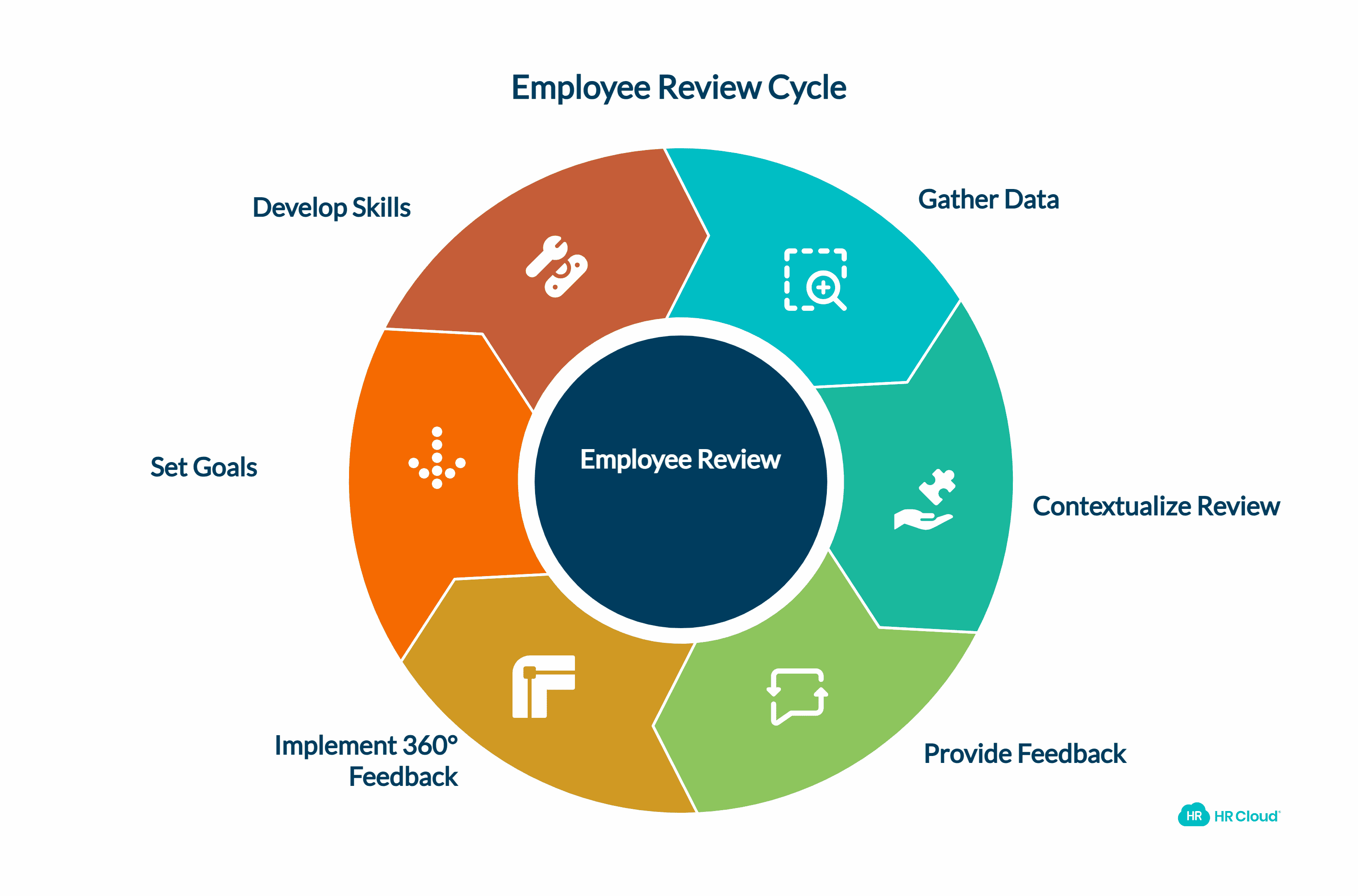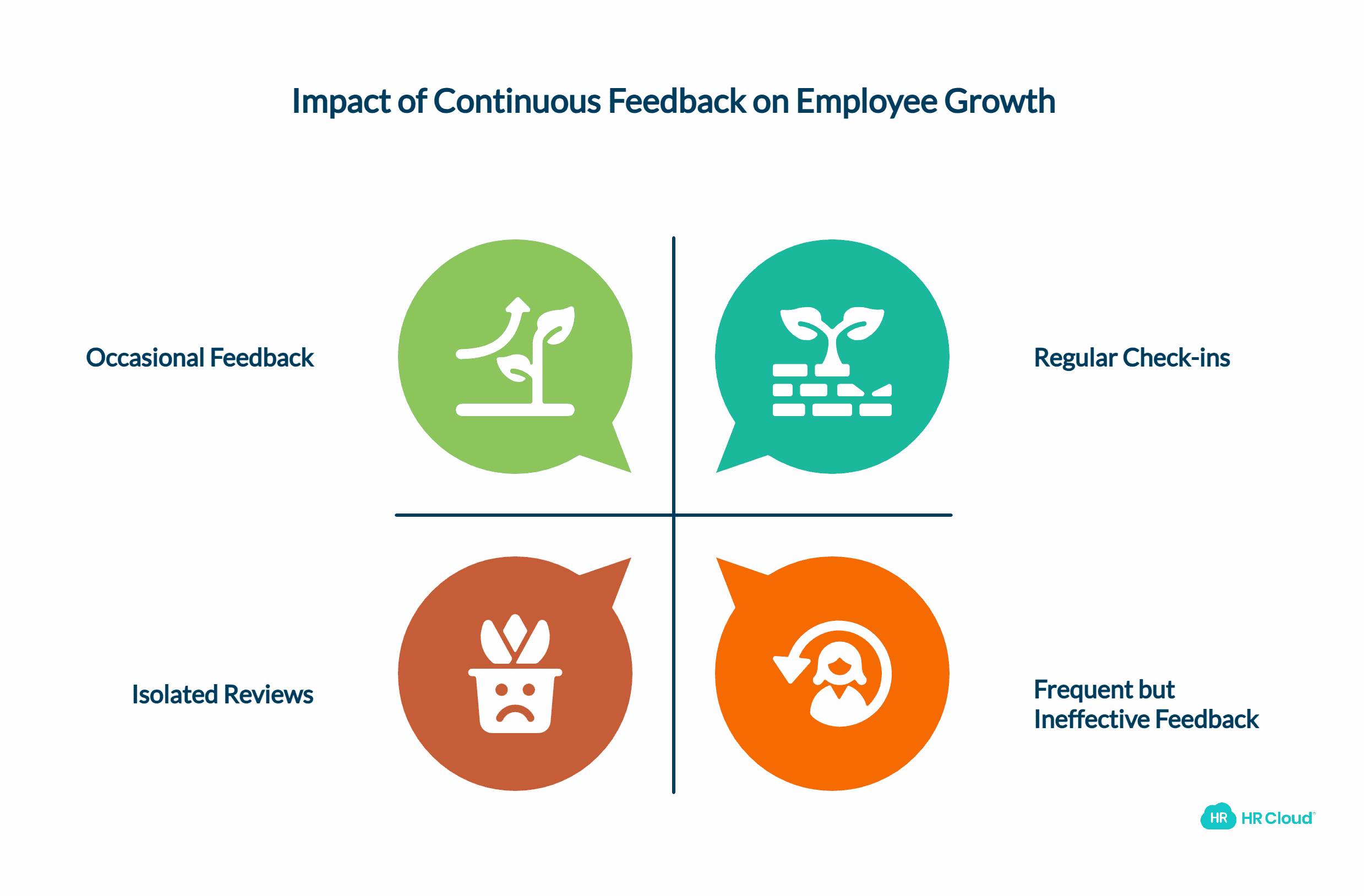10 Points to Consider When Giving Great Performance Review Feedback

- The Purpose of Performance Reviews
- 10 Points to Consider When Giving Great Performance Review Feedback
- 1. Understand the Purpose
- 2. Set an Agenda
- 3. Set Specific Time
- 4. Track Employee Performance
- 5. Active Listening
- 6. Choose Your Language Carefully
- 7. 360° Vision of the Employee Journey
- 8. Ask Around
- 9. Agree on Next Steps
- 10. Feedback Outside of a Review


 Cut onboarding time
by 60%—here's the
Ultimate Checklist
that helped do it.
Cut onboarding time
by 60%—here's the
Ultimate Checklist
that helped do it.

Everyone, regardless of who they are or what their job is, loves to know that they're doing a great job. Depending on how you phrase it, most people also want to know when they're not meeting expectations. Without the use of positive employee feedback sessions, whether in a group or one-on-one, many of us would find ourselves clueless as to how well or poorly we are performing at work. All too often, this is the form that employee performance reviews take.
For something as crucial as employee performance feedback, you need to be sure you're getting it right. In this article, we'll take a look at what feedback is and why it's important to receive feedback, why it is useful, and share some tips on how to give great performance review feedback in the future. We'll also explore review feedback examples and provide guidance on writing performance reviews that are both effective and constructive.
The Purpose of Performance Reviews
First, let’s take a closer look at the purpose of employee feedback. You can talk about improvement all you like, but without the context of what you’re improving, the need to do so can feel meaningless.
Beyond serving as a barometer for employees to gauge their overall contribution, performance evaluations give management valuable insight into how the organization is functioning. They help employees understand their own standing—individually or as part of a team—while also showing leadership where the strongest and weakest performers are. This information, combined with other data, can help leaders rethink how they operate to optimize output more effectively.
Now that we’ve clarified the purpose of performance review feedback, let’s explore how to make it as effective as possible. We’ll cover key aspects of conducting performance reviews, including using a performance evaluation template and providing constructive feedback.
The first tip ties into what we've previously covered. Failure to understand the reason behind doing something means that when it comes to doing it, your results will be sub-optimal. Without using KPI retail salespeople would find the purpose of their job considerably more abstract than they do. The same goes for employee performance reviews. Going into a performance review session, understanding the crucial nature it holds for employees and managers alike is vital if you're going to justify doing it at all. An appreciation for how a good performance review benefits all involved allows you to structure, plan, and deliver reviews that provide positive change to the company's way of working. This understanding is key to creating effective performance evaluations that focus on integrity, efficiency, and initiative.
2. Set an Agenda
A great way to ensure that you get everything necessary out of a performance review is to have an agenda set before it comes time to carry out the review. Distributing this through email or printouts to all involved, ahead of time, allows everyone to arrive, with employees engaged, ready to discuss the items on the agenda as completely as possible. This not only reduces the issue of wasted time but also allows people to feel more comfortable being active participants. If they're looking out for something they don't expect, they'll never give you the most accurate depiction of their perspective. Without that, a performance review is rendered obsolete. Consider using a performance evaluation template to structure your agenda and ensure all important points are covered, including adaptability and accountability.
3. Set Specific Time
One of the main reasons why even meetings with agendas can prove unsuccessful is that they weren't treated as important by those organizing them. Carrying out performance reviews on the fly means that people are less likely to take them seriously or be prepared for them. And, as such, the results they garner are limited.
Setting aside a chunk of time for the employee performance evaluation to take place, and sending a meeting request email to confirm it, implies a gravitas and importance to it. This ensures that it is treated seriously and with a desire from all parties for it to be a success, and not something that's being ticked off the list of things to do. Consider scheduling regular one-on-one meetings to provide ongoing feedback and support, addressing aspects such as attendance, reliability, and punctuality.
4. Track Employee Performance
Even if you're holding these meetings regularly, issues can arise in between one meeting and the next. Keeping up to date on an employee’s performance, and logging it through a process improvement tracker excel template, allows their performance review to feel less like a chore to prepare for.
It also gives the person organizing the review the chance to introduce any mitigating factors that can explain any uptick or drop-off in performance. Leaving this to the review itself can lead to unproductive and unhelpful performance reviews for all involved. Regular tracking can help you provide more accurate and timely feedback on employee performance, including their flexibility and time management skills.
5. Active Listening
One of the most important things to remember whilst conducting an employee performance review is that it is mostly for the person being reviewed. In short, the point of holding the meeting, whether virtual or face-to-face, is to check in and determine areas for improvement. You could always do this with an employee survey, but the purpose of a performance review is its inherent interactivity.
-
By actively listening to what the employee is saying, you make a concerted effort to limit your comments or questions. It also means that anything you pick up on from them can be challenged or discussed there and then, as opposed to being forgotten about, which can ultimately help an employee improve their performance. This approach enhances communication skills and fosters better employee engagement, while also assessing their dependability and problem-solving abilities.
6. Choose Your Language Carefully
It may be assumed that this point refers to performance reviews that deal with negative feedback. And whilst that may be the moment in which you are generally more careful with the language that you use, it doesn't mean that this is the only occasion you should take time to consider it.
Language is so important. Without it, our ability to communicate would be primal. And so, when it comes to taking the lead on the performance review process, being careful not to say something that feels leading or that puts unnecessary stress on the employee is best avoided.
Training yourself to look at situations in the most positive light is a good way of ensuring growth and development happen. If you take a pessimistic view of the world, chances are this will bleed through into your performance review, causing employees to be more lacking in confidence than they otherwise ought to be. Use performance review comments that are clear, specific, and constructive, focusing on professionalism and leadership skills.
7. 360° Vision of the Employee Journey
When considering the content of your employee review, it's important to accumulate all the data you have available. If you've discussed their background and their ambitions with them, be sure to build that into the context of your review.
If, for example, you work at Amazon and someone is looking to become a manager at one of your fulfillment centers eventually, you can incorporate that into the performance review. If how they're performing doesn't meet the required standard for management, this can be used as something to work on. As well as contextualizing the whole process, it can provide people with a motivation they otherwise wouldn't have. Consider implementing a 360-degree feedback system to gather a comprehensive view of an employee's performance, including their goal-setting abilities and technical skills.
8. Ask Around
Nobody is completely understood merely by seeing their statistics. The outputs or the performance that we drive through work is rarely a complete representation of our character or our ability
So, whilst your impression of a person and the contributions they make to the overall success of the company are important, there are other factors to consider. You could ask around, either in person or by using a call that takes place on your hosted PBX phone system. Get in touch with other managers who've had experience with this employee and ask for their opinion. This can provide valuable insights into the employee's teamwork, collaboration, and interpersonal skills, as well as their career development progress and self-assessment abilities.
9. Agree on Next Steps
Whilst we covered the idea of the future in point seven, we mustn't just treat the future as an abstract dimension. Creating some achievable, reasonable goals to move forward with as part of the annual performance review means it becomes more than just a summary of the work someone has been doing. Understanding the phases of the employee journey makes it easier to introduce this across a period of performance reviews.
It can either provide affirmation of what they're already doing or suggest ways in which they can change to achieve better results. Either way, it allows the person to set goals in a manner that would otherwise be a journey without a roadmap. This approach supports professional development and helps in setting clear performance goals, focusing on skill development and quality of work.
10. Feedback Outside of a Review
It's important not to isolate the conversation you have with an employee to their performance evaluation alone. We mentioned earlier that you should keep track of how your workers perform between performance reviews, and whilst you're doing this, don't be afraid to have a dialogue with them, which you can direct through performance management software.
Doing this not only makes them more comfortable discussing work with you, but it allows them to rectify any issues in a manner that can be discussed at the performance review. Part of our performance appraisal is, of course, how we learn from our mistakes. Providing continuous feedback and having regular check-ins can greatly enhance employee growth and productivity, addressing aspects such as creativity and client relations.
Conclusion
In this article, we've taken a look at what purpose employee performance reviews fulfill and covered some ways in which you can improve yours. We've discussed how performance reviews function and shared tips for you to put into practice going forward. It isn't an easy adjustment to make, especially if you already have an established way of doing things. Still, it could prove to be a great way of getting the most out of the people who work for you. By implementing these strategies for effective performance evaluations and conducting performance reviews regularly, you can foster a culture of continuous improvement and employee development within your organization.
Remember that a simple performance review can be just as effective as a complex one, as long as it provides actionable feedback and focuses on work quality and performance improvement. Whether you're conducting an annual performance review or providing quarterly performance reviews, the key is to maintain open communication, set clear performance expectations, and offer balanced feedback that addresses both strengths and areas for improvement.
By incorporating peer feedback and encouraging employee self-evaluation, you can create a more comprehensive picture of individual performance and team performance. This approach not only helps in setting accurate performance ratings but also promotes a culture of accountability and continuous growth.
Ultimately, the goal of any performance discussion is to provide specific feedback that helps employees understand their current standing and guides them towards future success. By focusing on performance competencies and offering developmental feedback, you can turn each review into an opportunity for both personal and organizational growth.
 Discover how our HR solutions streamline onboarding, boost employee engagement, and simplify HR management
Discover how our HR solutions streamline onboarding, boost employee engagement, and simplify HR management
Author Bio:
Richard Conn is the Senior Director for Demand Generation at 8x8, a Gartner Magic Quadrant Call Center platform with integrated contact center, voice, video, and chat functionality. Richard is an analytical & results-driven digital marketing leader with a track record of achieving major ROI improvements in fast-paced, competitive B2B environments.
Keep Reading
The Hidden Metrics of Frontline Success: Beyond Engagement Scores
"What gets measured gets managed, but what gets measured well gets transformed." — Peter
Embracing Diversity: Recognizing Different Cultures in the Workplace
Workplaces today reflect the incredible diversity of the world around us. People bring
From Manual to Automated: A Complete Guide to Digitizing Employee Onboarding for Large Organizations
Sarah Chen, Director of HR at a 7,000-employee healthcare organization, starts her Monday
Like What You Hear?
We'd love to chat with you more about how HR Cloud® can support your business's HR needs. Book Your Free Demo

Build a Culture of Recognition. Boost Engagement. Guaranteed.
Workmates empowers employees to stay informed, connected, and appreciated—whether they’re on the front line, in the office, or remote. Recognition drives 12x higher engagement.Trusted by industry leaders in every sector




Cut Onboarding Costs by 60%.
Take the confusion and follow-ups out of onboarding with automated workflows, digital forms, and structured portals—so new hires ramp faster 3X quicker.Trusted by industry leaders in every sector





